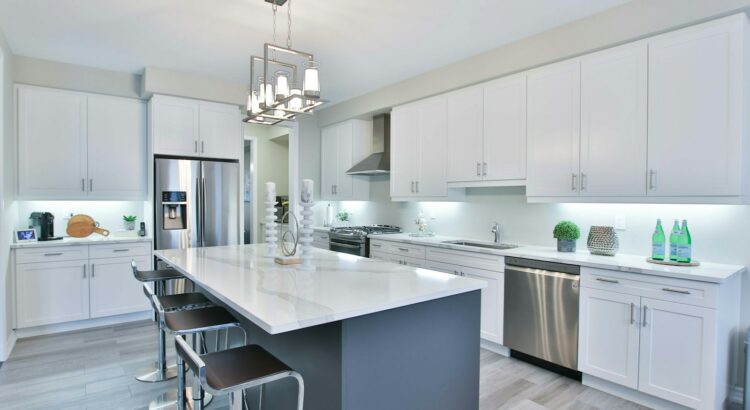Hey there, fellow culinary enthusiasts! We all love spending time in the kitchen, whipping up delicious meals and experimenting with new recipes. But there’s one unwelcome guest that has a way of worming its way into our beloved culinary space – mold. Yes, that pesky, unsightly mold that can turn our kitchen into a damp and dingy nightmare. But fear not, for we have some savvy tips and tricks up our sleeves to prevent and tackle those kitchen mold issues. So get ready to say goodbye to that stubborn mold and hello to a clean and pristine kitchen!
Table of Contents
- Keep Your Kitchen Well-Ventilated
- Embrace the Power of Natural Light
- Stay on Top of Refrigerator Hygiene
- Dry Wet Surfaces Immediately
- Store Food Properly to Prevent Spoilage
- Regularly Clean and Disinfect the Sink
- Invest in a High-Quality Exhaust Fan
- Seal Leaks and Repair Plumbing Issues Promptly
- Organize Your Pantry to Reduce Clutter
- Opt for Mold-Resistant Paint and Materials
- Questions & Answers for Preventing and Tackling Kitchen Mold Issues
- Final Thoughts
Keep Your Kitchen Well-Ventilated
When it comes to preventing and tackling kitchen mold issues, one of the most important things you can do is to keep your kitchen well-ventilated. Proper ventilation is essential for keeping moisture levels low and preventing the growth of mold.
Here are some tips for keeping your kitchen well-ventilated:
Use a Range Hood: A range hood can help remove excess moisture and cooking odors from the air. Make sure to use it whenever you’re cooking to help keep the air in your kitchen fresh and dry.
Open Windows and Doors: Whenever possible, open windows and doors to let fresh air into your kitchen. This can help improve air circulation and reduce the risk of mold growth.
Use a Dehumidifier: If your kitchen tends to be particularly humid, consider using a dehumidifier to help remove excess moisture from the air. This can be especially helpful if you live in a humid climate or if your kitchen is located in a basement or other damp area.
Clean Your Vents: Make sure to regularly clean your kitchen vents to remove any built-up grease or grime that could be blocking the flow of air. This can help ensure that your ventilation system is working as effectively as possible.
By following these tips for keeping your kitchen well-ventilated, you can help reduce the risk of mold growth and keep your kitchen a healthy and pleasant place to be. Remember, good ventilation is key to mold prevention in the kitchen.
Embrace the Power of Natural Light

Let’s talk about how you can harness the power of natural light to prevent and tackle kitchen mold issues. Natural light not only brightens up your kitchen space, but it also plays a crucial role in preventing mold growth.
Here’s how you can make the most of natural light in your kitchen:
Utilize Windows and Skylights
Pros:
– Windows and skylights allow natural light to flood into your kitchen, creating a bright and airy environment.
– Natural light helps to inhibit mold growth by drying out damp areas and reducing moisture levels.
Cons:
- Installation of windows and skylights can be expensive.
- Not all kitchen layouts may be suitable for windows or skylights, limiting the amount of natural light that can enter the space.
One of the most effective ways to embrace natural light is by strategically placing windows and skylights in your kitchen. This not only brightens up the space, but it also helps to inhibit mold growth by allowing sunlight to penetrate and dry out any damp areas. If your kitchen layout allows, consider installing windows or skylights to boost natural light exposure and improve air circulation.
Choose Light-Colored Materials
Pros:
– Light-colored materials, such as cabinets, countertops, and backsplashes, can help to reflect natural light and brighten the space.
– Light-colored materials can make the kitchen feel larger and more open.
Cons:
- Light-colored materials may require more frequent cleaning to maintain their brightness.
- Some homeowners may prefer darker color schemes, making it a personal preference issue.
Another way to enhance natural light in your kitchen is by opting for light-colored materials. Light-colored cabinets, countertops, and backsplashes can reflect natural light, making the space feel brighter and more open. This not only creates a welcoming atmosphere but also helps to prevent mold growth by reducing the potential for moisture accumulation in dark, shadowy areas. Consider incorporating light-colored materials into your kitchen design to maximize the benefits of natural light.
By embracing the power of natural light in your kitchen, you can not only create a bright and inviting space, but also take proactive steps to prevent and tackle mold issues. Whether it’s through the strategic placement of windows and skylights or the use of light-colored materials, harnessing natural light is a simple yet effective way to keep your kitchen mold-free. So, let the sunshine in and enjoy a healthier, brighter kitchen!
Stay on Top of Refrigerator Hygiene
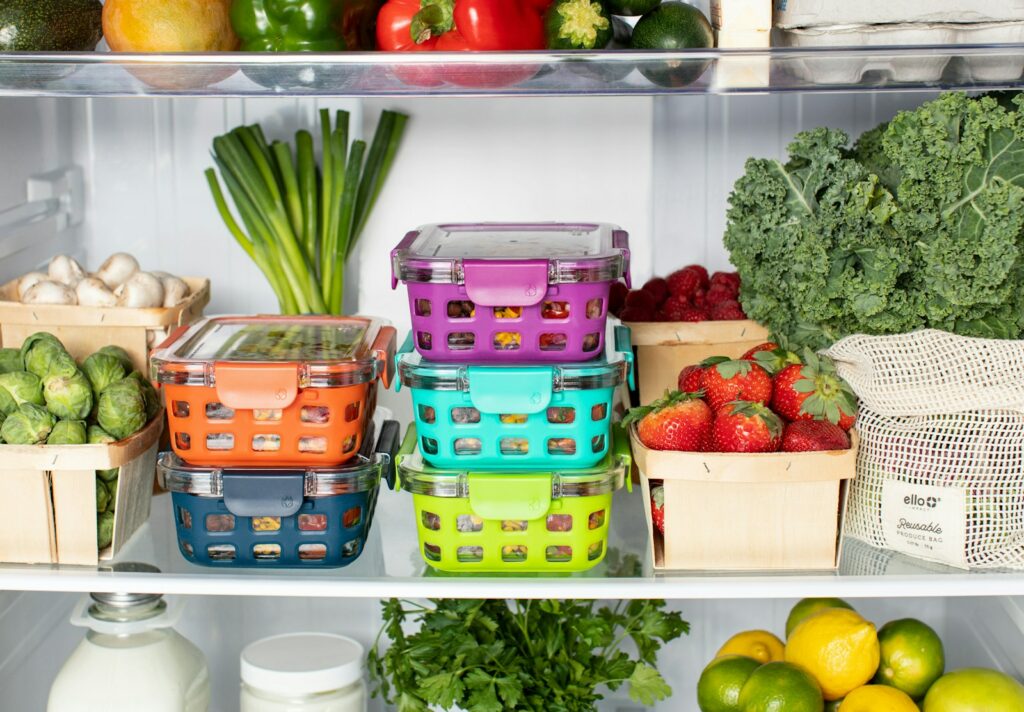
Mold can quickly become a problem in any kitchen, especially when it comes to the refrigerator. To prevent and tackle kitchen mold issues, it’s important to stay on top of refrigerator hygiene.
Here are some tips to help you keep your refrigerator mold-free:
Clean spills promptly: Any spills in the refrigerator should be cleaned up immediately to prevent mold growth. Make sure to regularly check for spills and wipe them up with a mild cleaning solution.
Check for old leftovers: Leftovers can easily get forgotten in the back of the refrigerator, leading to mold growth. Regularly check for old leftovers and discard them to prevent mold from spreading.
Store food properly: Properly storing food in airtight containers can help prevent mold growth. Make sure to seal all food items tightly to keep them fresh and mold-free.
Inspect and clean the refrigerator gasket: The gasket around the refrigerator door can be a breeding ground for mold if not properly maintained. Regularly inspect and clean the gasket to prevent mold from forming.
| Pros | Cons |
| Easy to implement | Requires regular maintenance |
| Helps keep food fresh | May require additional cleaning supplies |
By following these tips, you can prevent kitchen mold and keep your refrigerator clean and hygienic. Staying on top of refrigerator hygiene is essential for a healthy kitchen environment.
Dry Wet Surfaces Immediately
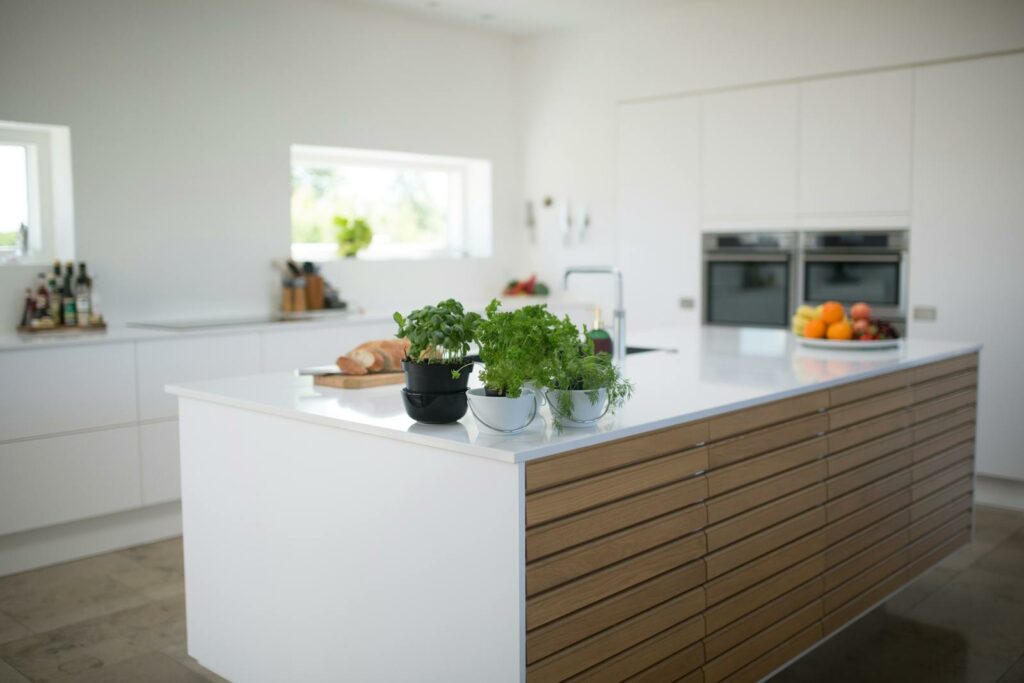
We all know how easy it is for water to splash onto the countertops or for stray drops to land on the floor when washing dishes. However, leaving these wet surfaces to air dry on their own can lead to the growth of pesky kitchen mold. To prevent this from happening, it’s crucial to dry wet surfaces immediately.
Here’s how you can tackle this issue and keep your kitchen mold-free.
Why is it important to dry wet surfaces immediately?
When water is left to linger on surfaces, it creates the perfect environment for mold to thrive. Mold spores are present everywhere, and they only need moisture and a food source to start growing. By drying wet surfaces promptly, you remove the moisture that mold needs to grow, effectively preventing any potential mold issues.
Tips for drying wet surfaces in the kitchen:
- Keep a clean, dry cloth handy to quickly wipe down countertops and kitchen appliances after they come into contact with water.
- Use a squeegee to remove excess water from countertops and windows to speed up the drying process.
- For kitchen floors, use a mop or towel to soak up any water spills and ensure the surface is completely dry.
By following these simple tips, you can significantly reduce the risk of kitchen mold taking hold in your home. It only takes a few extra moments to dry wet surfaces, but the payoff of a mold-free kitchen is well worth the effort. Don’t let moisture linger and invite mold into your kitchen. Take the necessary steps to keep things dry and mold-free.
Store Food Properly to Prevent Spoilage
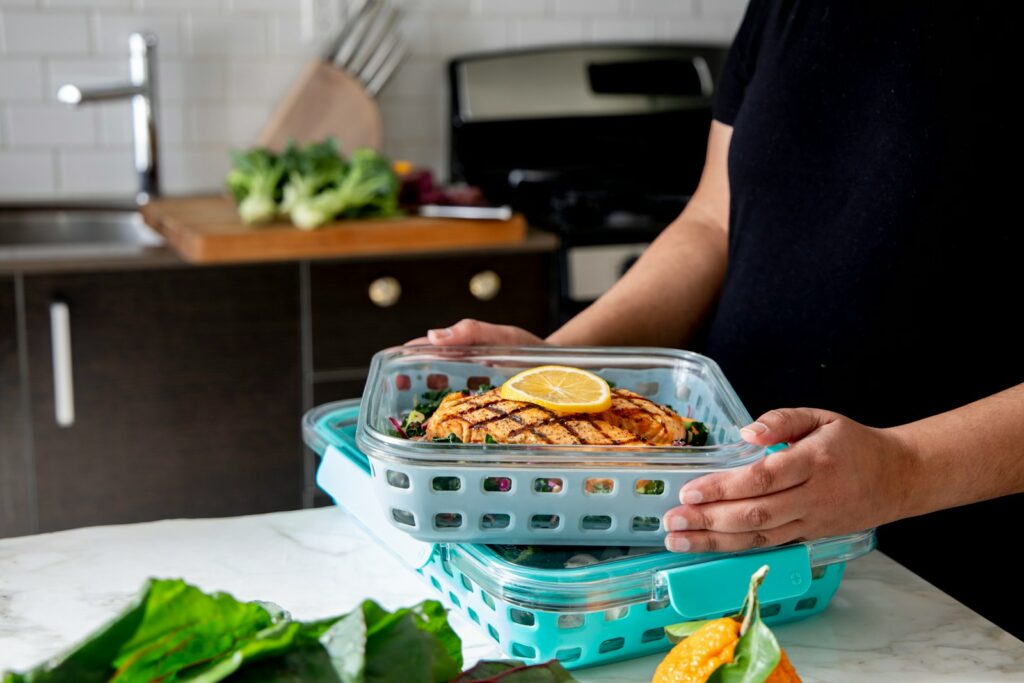
When it comes to preventing kitchen mold issues, one of the key factors to consider is how you store your food. Proper food storage not only helps prevent spoilage, but it also plays a crucial role in mold prevention.
Here are some tips to help you store food properly in your kitchen:
Keep food in airtight containers: Airtight containers help to keep moisture out, reducing the risk of mold growth. Store items such as grains, cereals, and dry goods in sealed containers to prevent exposure to moisture.
Keep fruits and vegetables fresh: Fruits and vegetables can be a breeding ground for mold if not stored properly. Keep them in the refrigerator to extend their shelf life, or use breathable storage bags to allow air circulation and prevent moisture buildup.
Properly seal leftovers: Leftovers should be stored in airtight containers or wrapped in plastic wrap to prevent exposure to air and moisture. This helps to prolong the freshness of the food and reduce the risk of mold growth.
Monitor refrigerator temperature: Keep your refrigerator temperature at 40°F or below to slow down the growth of bacteria and mold. Regularly clean out expired or spoiled food to prevent mold from spreading.
Proper food storage is essential for preventing kitchen mold issues. By following these tips, you can reduce the risk of mold growth and keep your kitchen a healthy and clean environment for food preparation. Remember, mold prevention starts with proper food storage!
Regularly Clean and Disinfect the Sink
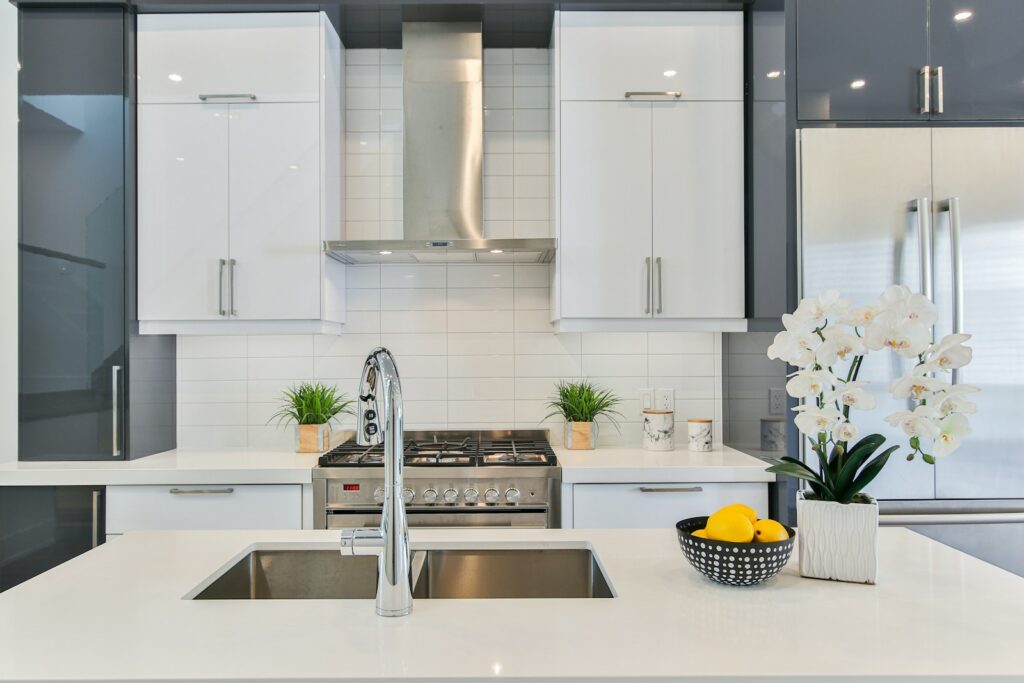
Keeping your kitchen sink clean and disinfected is essential in preventing mold growth. Mold loves to thrive in damp and dirty places, and the kitchen sink is a prime spot for it to develop if not properly maintained. Here are some steps you can take regularly to ensure your sink stays mold-free:
- Scrub and Clean: Use a mild abrasive cleaner to scrub the sink and remove any food residue or grime. Pay close attention to the edges and around the drain.
- Disinfect: After cleaning, disinfect the sink with a solution of water and bleach or a commercial disinfectant. Let it sit for a few minutes before rinsing thoroughly with water.
- Keep it Dry: After each use, make sure to dry the sink with a clean towel or sponge to remove any leftover moisture. This will help prevent mold from taking hold.
In addition to regular cleaning, consider incorporating a weekly deep cleaning of your sink. This can include removing any small food particles that may have accumulated in the drain, and giving the entire sink a thorough scrub. By taking these extra measures, you can significantly reduce the risk of mold developing in your kitchen sink.
Remember, mold prevention is key to maintaining a healthy kitchen environment. By staying on top of regular cleaning and disinfecting of your sink, you can greatly reduce the chances of mold growth and keep your kitchen clean and safe for you and your family.
Invest in a High-Quality Exhaust Fan
Dealing with kitchen mold can be a nightmare for any homeowner. From the unsightly appearance to the potential health risks, it’s important to take proactive steps to prevent and tackle kitchen mold issues. One of the best investments you can make is in a high-quality exhaust fan for your kitchen. Here’s why:
Effective Ventilation: A high-quality exhaust fan will effectively remove steam, smoke, and cooking odors from your kitchen, preventing moisture buildup that can lead to mold growth.
Improved Air Quality: By removing airborne contaminants, an exhaust fan can help improve the overall air quality in your kitchen, making it a healthier environment for you and your family.
Mold Prevention: Proper ventilation is key to preventing mold growth in the kitchen. By keeping the air circulating and removing excess moisture, an exhaust fan can significantly reduce the risk of mold development.
When shopping for an exhaust fan, look for one that is specifically designed for kitchen use, with a high cubic feet per minute (CFM) rating to effectively remove air. Consider investing in a model with features such as adjustable speed settings, a built-in light, and easy-to-clean filters for added convenience.
In addition to investing in a high-quality exhaust fan, be sure to follow other mold prevention best practices such as promptly fixing leaks, cleaning up spills and splashes, and using a dehumidifier if necessary. By taking proactive steps to keep your kitchen dry and well-ventilated, you can significantly reduce the risk of mold growth and enjoy a healthier, more comfortable living space.
Seal Leaks and Repair Plumbing Issues Promptly
Dealing with kitchen mold can be a daunting task, but by taking proactive steps to prevent and tackle the issue, you can keep your kitchen environment healthy and mold-free. One of the most important aspects of mold prevention in the kitchen is to seal leaks and repair plumbing issues promptly. By addressing these issues right away, you can prevent moisture buildup, which is a primary factor contributing to mold growth.
Here are some practical steps to seal leaks and repair plumbing issues in your kitchen to prevent mold:
- Regularly check under the sink for any signs of leaks and repair them immediately.
- Inspect your refrigerator’s water supply line for any leaks and replace it if necessary.
- Check the seals around your dishwasher and sink to ensure they are tight and not causing any leaks.
- Regularly inspect and maintain your kitchen’s plumbing system to prevent any potential leaks or issues.
By proactively addressing potential leaks and plumbing issues in your kitchen, you can significantly reduce the risk of mold growth. Taking these steps will not only protect your kitchen from mold but also promote a healthier living environment for you and your family.
Preventing and tackling kitchen mold issues starts with taking proactive steps to seal leaks and repair plumbing issues in your kitchen. By addressing leaks promptly and maintaining your plumbing system, you can prevent the buildup of moisture that contributes to mold growth. So, keep a close eye on your kitchen’s plumbing, and take immediate action to repair any leaks or issues to keep mold at bay.
Organize Your Pantry to Reduce Clutter
When it comes to preventing and tackling kitchen mold issues, one of the key factors to consider is the organization of your pantry. A cluttered and disorganized pantry can create the perfect environment for mold to thrive, so it’s important to take steps to keep it tidy and well-maintained.
Here are some tips to help you organize your pantry and reduce the risk of mold:
Clear Out and Clean
Start by removing everything from your pantry and giving it a thorough clean. Wipe down the shelves, walls, and any containers or bins with a mixture of water and vinegar to kill any mold spores that may be present. Once everything is clean, sort through your pantry items and get rid of anything that is past its expiration date or showing signs of mold.
Use Airtight Containers
Transfer items like grains, cereals, flour, and snacks into airtight containers to prevent moisture from getting in and creating a breeding ground for mold. Clear plastic or glass containers are best, as they allow you to see the contents easily and keep track of expiration dates. Label the containers with the contents and date of purchase to stay organized.
Establish Zones
Group similar items together in designated zones within your pantry. For example, place all baking supplies in one area, canned goods in another, and spices in a separate section. This will make it easier to find what you need and prevent items from getting lost and forgotten, which can lead to moldy surprises later on.
Maintain Regularly
Make it a habit to regularly clean and organize your pantry to maintain a mold-free environment. Check expiration dates, wipe down containers, and sweep or vacuum the floor to keep it free of crumbs and spills. By staying on top of your pantry organization, you can reduce the risk of kitchen mold and ensure that your food stays fresh and safe to eat.
Opt for Mold-Resistant Paint and Materials
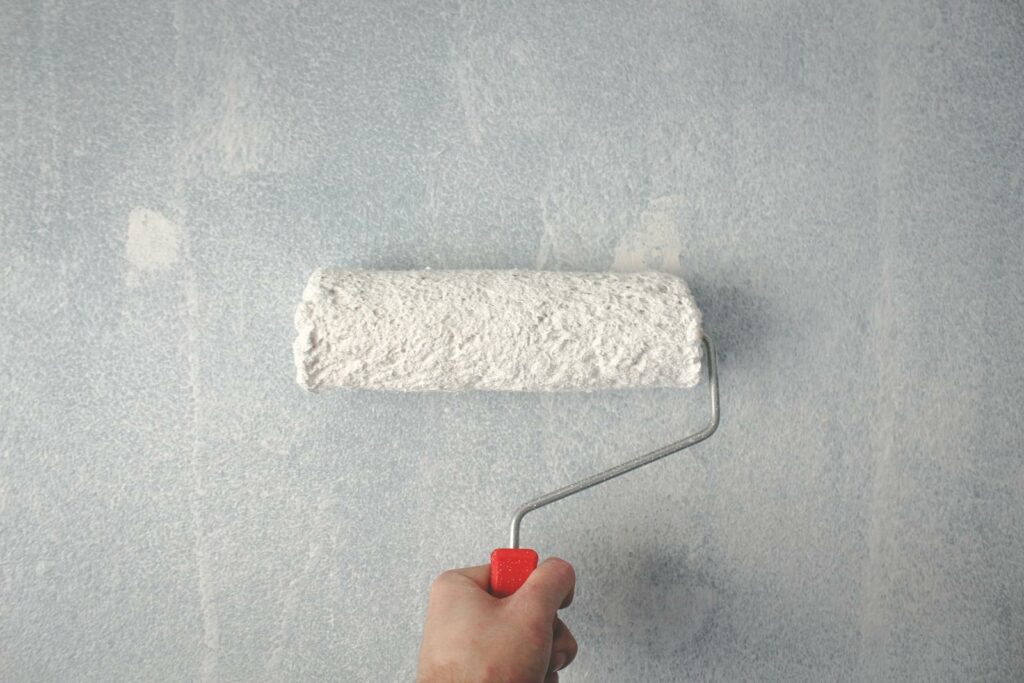
When it comes to preventing kitchen mold, one of the best proactive steps you can take is to opt for mold-resistant paint and materials. These specially formulated products are designed to inhibit the growth of mold, mildew, and bacteria, helping to keep your kitchen clean and healthy.
Mold-Resistant Paint:
Using mold-resistant paint on your kitchen walls can make a significant difference in mold prevention. Look for paints that are specifically labeled as mold-resistant, as these contain additives that help to inhibit mold growth. While these paints may cost a bit more than regular paints, the investment can save you time and money in the long run by reducing the need for frequent repainting due to mold issues.
Mold-Resistant Materials:
When choosing materials for your kitchen, such as drywall, insulation, and flooring, opt for products that are labeled as mold-resistant. These materials are designed to resist moisture and prevent the growth of mold, making them ideal for use in an environment prone to humidity and spills.
By incorporating mold-resistant paint and materials into your kitchen design, you can create a more resilient and healthy space that is less likely to experience mold issues. Additionally, these products can help to improve indoor air quality by reducing the presence of mold spores, which can be beneficial for those with allergies or respiratory sensitivities.
When it comes to creating a kitchen that is both beautiful and functional, making the choice to invest in these specialized products can pay off in the long term by promoting a cleaner and healthier living environment.
Questions & Answers for Preventing and Tackling Kitchen Mold Issues
How does mold grow in kitchens?
Mold in kitchens typically grows in damp, warm, and poorly ventilated areas. This can include under sinks, around the refrigerator, and in forgotten food containers.
Why is it important to prevent kitchen mold?
Preventing kitchen mold is essential for maintaining a clean and healthy living environment. Mold can cause allergies, respiratory problems, and musty odors.
What are some tips for preventing mold in the kitchen?
Regularly clean and disinfect kitchen surfaces, fix any leaks or water damage, and improve ventilation by opening windows or using exhaust fans while cooking.
How can I keep my kitchen dry to prevent mold growth?
Keep an eye out for any leaks and fix them promptly, wipe down wet surfaces, and use a dehumidifier if necessary to maintain a dry environment.
Are there any natural mold prevention remedies for the kitchen?
Yes, some natural remedies for preventing mold in the kitchen include using a mixture of vinegar and water to clean surfaces, and using essential oils with antifungal properties.
Is it possible for mold to grow inside kitchen appliances?
Yes, mold can grow inside appliances like refrigerators, dishwashers, and coffee makers if not properly cleaned and maintained.
What should I do if I find mold in my kitchen?
If you discover mold in your kitchen, it’s important to clean it immediately using a mixture of water and detergent, and then thoroughly dry the affected area.
How often should I check for mold in my kitchen?
It’s a good idea to routinely inspect your kitchen for any signs of mold, especially in areas that tend to be damp or receive less airflow.
Could my cooking habits contribute to mold growth in the kitchen?
Yes, excessive boiling, frying, or steaming without proper ventilation can create excess moisture and contribute to mold growth in the kitchen.
What resources are available for tackling severe kitchen mold issues?
If you have a severe mold problem in your kitchen, it’s best to consult a professional mold remediation service to safely and effectively address the issue.
Final Thoughts
Well, there you have it – a comprehensive guide to preventing and tackling kitchen mold issues. With these tips and strategies, you can keep your kitchen mold-free and ensure a healthier and more enjoyable cooking experience. Remember, vigilance and regular maintenance are key in the battle against mold. So, don’t let that sneaky fungus ruin your kitchen – stay proactive, and keep your space clean, dry, and well-ventilated. Here’s to a mold-free kitchen and many delicious meals to come! Cheers to happy and healthy cooking!
